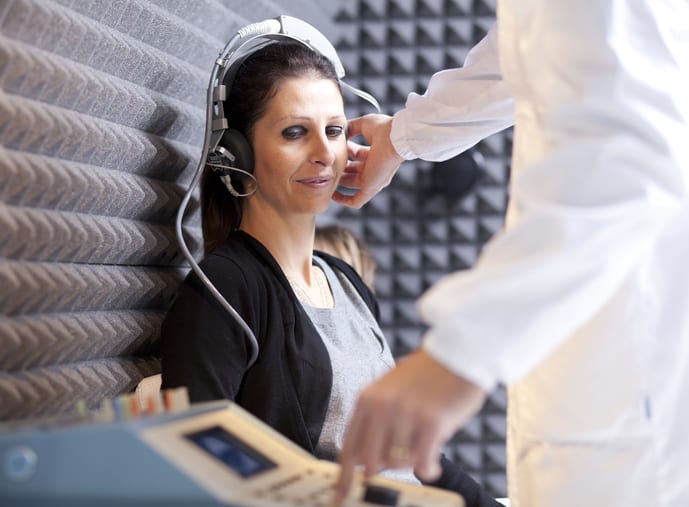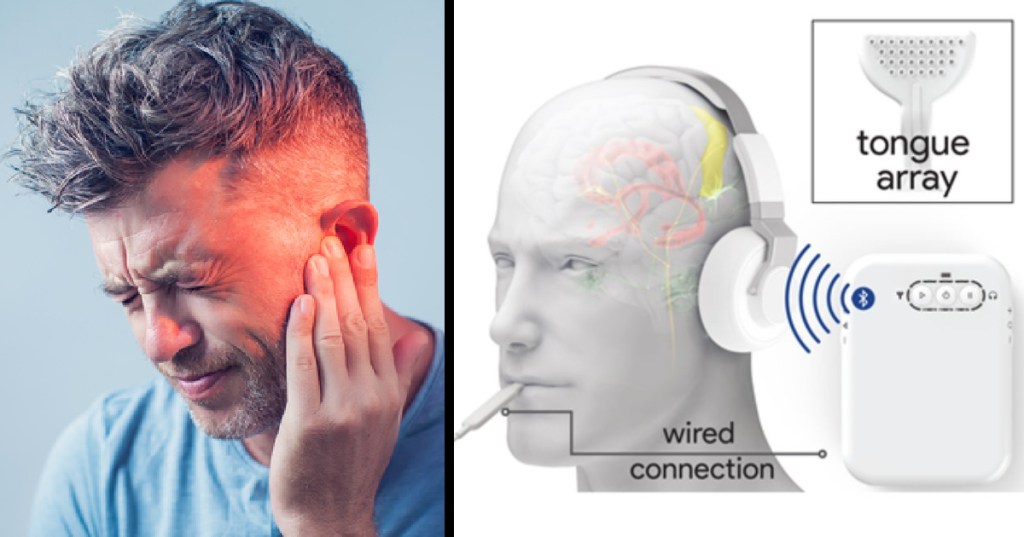There are surely plenty of medical conditions in the world that are more serious and life threatening than tinnitus, which causes a constant, high-pitched ringing in the ears, but I imagine there aren’t that many that would be more consistently annoying.
It affects millions of people around the world – maybe as many as 1 in 10 adults in the States – and for 25% of those people, symptoms last for more than a decade.
It can lead to difficulty focusing, fatigue, anxiety, and a reduction in the quality of life.

Image Credit: iStock
Until now, doctors have favored psychological interventions like cognitive-behavioral therapy to lessen the distress, mostly because they haven’t had any options. Until now, no drug or medical device has been known to alleviate the issue.
A new study in Science Translational Medicine, though, thinks a noninvasive device that applies a technique called bimodal neuromodulation could be the answer.
It combines sounds with zaps to the tongue, and may provide long-lasting relief to patients, says co-author Hubert Lim.

Image Credit: Neuromod Devices
He says the treatment targets the brain cells that are firing abnormally, and by pairing the zaps with sounds, they’re able to rewire brain circuits associated with tinnitus.
“The idea is that eventually your brain gets sensitive to many different things.
In a way, you have suppressed the tinnitus neurons but only by elevating the other neurons.”
The approach has been tried before, by a group led by professor Susan Shore at the University of Michigan. They developed a similar device, but instead of increasing sensitivity to a broad spectrum of sounds, the team’s method pairs a sound that matches the phantom one heard by patients with a specifically timed electrical pulse to the head or neck.
Her team reported the technique was effective in reducing the loudness and intrusiveness of the tinnitus, and Lim has some thoughts as to why both methods work.
“You can think of it as two ways to treat tinnitus.
One is you can try to find the tinnitus cells and shut them down.
Our approach is to make everything in the auditory system much more hyperactive to everything but the tinnitus.”
Lim’s study included 326 adults with chronic tinnitus. They used the device for 60 minutes a day for 12 weeks, and were divided into 3 groups that received slightly different types of sounds, timing of electrical pulses, and the delay between the two.

Image Credit: iStock
The results showed that 84% of the participants completed the 12-week regimen, and that 81% of the patients who did showed improvement in psychosocial variables like the ability to concentrate or sleep, lowered levels of anxiety and frustration, and an overall better quality of life.
For 77% of the group, the improvement was still going strong a year later, and 66% of participants reported feeling that they’d benefited from the device.
Richard Tyler, a audiologist not involved with the new study, is pleased with the process – and the results.
“The study is very thorough and comprehensive.
Given that, at this point, there is no pill or surgery available for tinnitus, this work is very important.”
He did feel that a lack of a control group weakened the results, as well as the fact that the scientists didn’t report whether there was any improvement in the actual tinnitus symptoms.
“You have tinnitus, and you have your reactions to tinnitus.
Those are two different things.
If you’re going to try to decrease the tinnitus, then you should be measuring the tinnitus.”
Lim says that it can be a had thing to measure, since perceptions can vary, but that they did measure perceptual changes and present those findings in a later paper.

Image Credit: iStock
Since Lim’s company was the one who funded the research, and are the ones producing the devices, most scientists feel like, though the results seem promising, some independent studies need to be done.
If you don’t want to wait, though, the bimodal neuromodulation devices are currently available through physicians in Ireland and Germany for around $3000, and Lim says the company is looking to get approval from the FDA to make the treatments available in the States, too.
Here’s to progress.
And if you’ve got an annoying, endless ringing in your ears, here’s to finding a way to make that stop, too.






